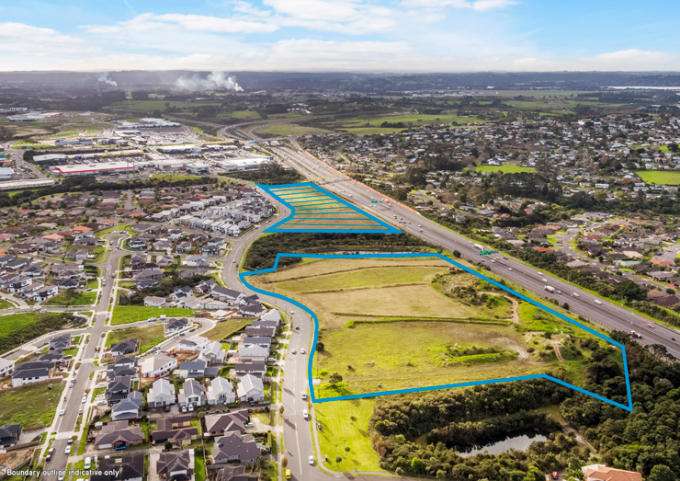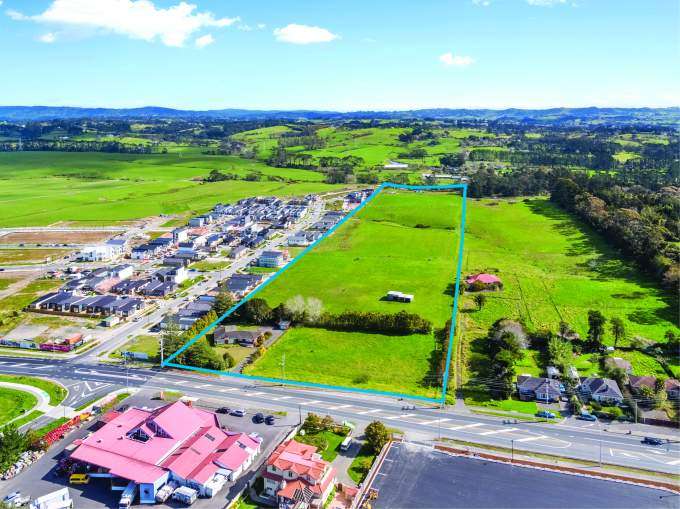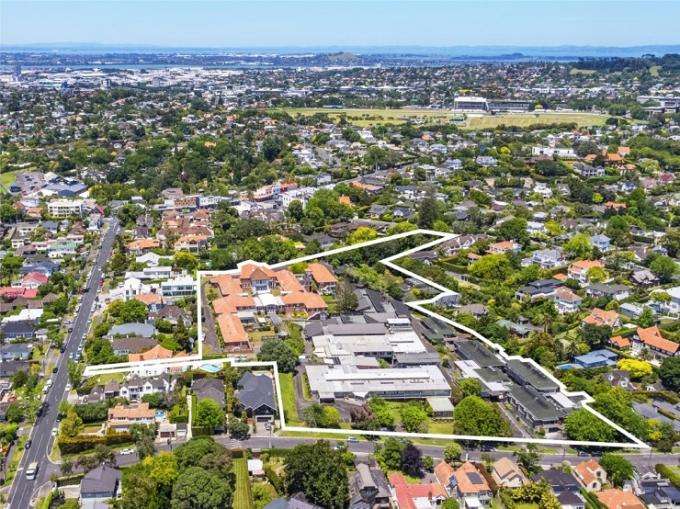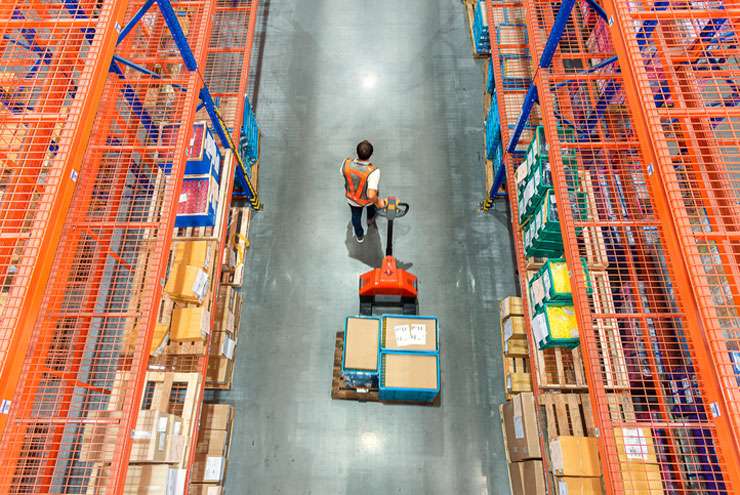Land in Auckland is being fought over by developers keen to put a “staggering” amount of cash into building new housing.
Agents from Colliers have sold around $400 million worth of land since the start of the first lockdown, which Josh Coburn, director of site sales for the agency, says will likely result in an estimated 2500 new homes in the next two years.
READ MORE: Find out if your suburb is rising or falling
Of two recent campaigns, both for land in Westgate, one had 16 bidders and one 18 bidders.
Start your property search
“One was on Westgate Drive with 18 bidders and $275 million of (combined) offers made on it, and then 88 Fred Taylor Drive had 16 offers and sold for $40 million unconditionally,” he told OneRoof.
“The combined value of offers on that one was $450 million and interestingly, because those two locations are a stone’s throw from each other, there were only three parties who bid on both. The interesting fact of that is there were 31 unique bidders and $700 million of cash on offer in Westgate for houses right now.”
Both the sites are greenfield opportunities and Westgate Drive, a farm on the side of the motorway, is a developer’s dream. “It’s a big piece of scaled land that’s surrounded by infrastructure and shopping malls and busways so that’s the sort of stuff that’s most sought after,” he says.
Many hundreds of homes will eventuate when the sites are developed but they are the tip of the iceberg for what’s happening in Auckland.
“We did the numbers on the land we’ve sold since April and we would estimate we’ve probably got 2500 homes-worth of supply. And that’s just my team. That’s not even scratching the surface of the total.”
Coburn thinks a lot of the housing problems are better dealt with privately, with many developers wanting to jump in and deliver product.

Westgate Drive, billed as a developer’s dream, attracted huge interest from developers. Photo / Supplied
He says when the Global Financial Crisis hit land was the first to stop trading because it has no income. So when Covid-19 reared its head, the initial thought was land would struggle again, but that has not happened.
Plummeting interest rates were cited as drivers but there was also uncertainty around blue chip assets. Tenant and rent issues saw a lot of money moving to land, with the strong residential market boosting confidence among developers.
“A lot of developers in this country are open to move between small and large terraces, freestanding or apartments,” Coburn says.
“There are moments in time when apartments are all go and then construction costs get out of kilter and risk grows and funding issues grow and then they shift back into terraces – and undoubtedly terrace house product is flavour of the month and has been for most of this year.”
Sites that don’t have big infrastructure hurdles are favoured and the cash in the system is staggering, Coburn says.

88 Fred Taylor Drive had 16 offers and sold unconditionally for $40 million. Photo / Supplied
But with house prices going up, the new stock is likely to be priced higher. (A year and a half ago developers were striving to build homes priced in the sub-$800,000 bracket, now they are confident of selling $1.2 million terrace homes again.)
“Everybody is looking,” Coburn says. “There are a lot of builder developers, not to be confused with land developers, and you’ve got your traditional land developers who buy a farm and put a road through it and create sections to sell to group home builders or super lots to group home builders or even sections to mum and dad and then build them a house.
“What we’re seeing a bit of now are builder developers who want to buy the land and build the houses, so they will put the roads in, the sections, the services, builders, like an integrated development model. There’s no shortage of people capable of that scale of development at the moment.”
While this bodes well for the housing crisis, a lot of land sold will take time to work through infrastructure issues. “There’s still an acute disconnect between the council’s budget and commitment to putting in the necessary infrastructure. Where you have infrastructure people will get stuck into it straight away for sure,” Coburn says.

The former Caughey Preston rest home sold during lockdown to a developer. Photo / Supplied
It’s not just greenfield sites that are being snapped up. “We sold [the former] Caughey Preston [rest home site in Remuera], we sold the Orewa Council building, we have sold a couple I can’t tell you because they are confidential very large land sales. We’ve sold some apartment sites in the CBD. There’s a full mix.
“And we’ve sold future urban land so that’s 10 years away landbanking sort of stuff. The consistency is land that is proximate to urban areas where people want to be.”
The three top areas are Westgate, Drury and Wainu/Silverdale followed by infill sites in areas like Flat Bush and Glen Innes.
Auckland’s Unitary Plan has opened up newly zoned land of which there is no shortage – but there is a shortage of infrastructure enabling that land to be developed. “Arguably, there does need to be a Governmental response for that because if we need houses and our council can’t enable them you can’t pass on the cost of development entirely to developers because there’s an economic benefit to the council down the track once those houses are built,” he says.
It’s a similar story in the commercial arena with a big demand being seen for industrial land.
Jolyon Thomson, JLL’s head of industrial, sales and leasing in Auckland, says the big rise in e-commerce since Covid-19 is fuelling a lot of that demand with people buying to both landbank and to develop.
“The majority of land purchases are from developers who are looking to develop for industrial buildings because the demand for industrial property from owner-occupier and tenants is extremely high,” he says.
“As a result they’re confident they can develop on a speculative or design build basis and get the return on investment.”

Logistics operators are also keen to snap up Auckland land. Photo / Getty Images
E-commerce was sped up by Covid with people’s home online purchasing leading to more demand for the storage of goods in warehouses combined with businesses reducing their retail footprints.
“The footprint for the larger logistics operators has increased. Once upon a time a 10,000sqm building was considered large whereas these days it’s more like 30,000sqm.
“There’s very little industrial greenfield land available in Auckland. As the population has grown and as industrial has become a stronger and more desirable market there’s been more demand for warehousing which has put a lot of pressure on available land.
“As a result the land values have increased but equally developers are very confident in their ability to buy and develop land either to lease or to sell warehousing facilities.”
Prime locations close to major infrastructure and roading are key, such as areas like Wiri and Highbrook, and there’s also been a huge uptake in land in Drury.
“There’s a big subdivision out there called Drury South, an industrial land subdivision for sale which has been a huge success.”
Buyers are private and institutional developers active in the industrial market.
Gerald Rundle, who heads Bayleys development site sales team, agrees that demand has been across the board.
Developers are looking ahead at next year and wanting to secure more land so they can rebuild stock which has been sold down, he says. “It’s no secret we’re seeing a higher level of sales volume in the market and obviously that’s feeding down to the developers who are part of that.”
He, too, says zoning is important to buyers in the residential market. “A lot of the greenfield questions that are asked include, ‘how far away is it to be zoned, or what’s the key thing about the services to the site?’ Are the right elements in place to allow them to get on with the development.”




